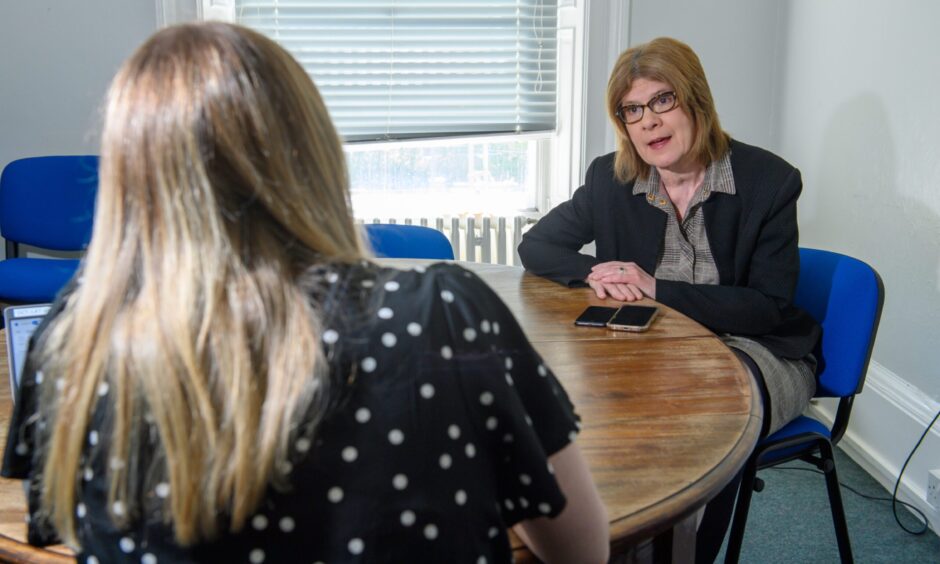
NHS Grampian is facing pressures across the board, from ambulances queuing outside hospitals to patients facing long waits for treatment.
We recently shared findings from the P&J’s health survey, where we gathered your experiences of accessing local healthcare across Grampian and Highland.
As part of our series, we sat down with NHS Grampian’s chair, Alison Evison, to discuss some of the main challenges facing the health service in the north-east.
We put questions to her about:
- Patients turning to private healthcare
- Ambulance queues outside hospitals
- Staff experiencing “unsustainable” pressure
- Funding pressures
What NHS Grampian chair Alison Evison told us
Q: We heard from a number of patients sharing their own personal stories. Some have waited years to be seen. How does it make you feel when you hear these accounts?
A: “We obviously want to give the best service we can to all our patients. It really matters that we do that, and we obviously want to hear about these experiences as well, and I’m very much sorry for people who don’t have the experience that we would like them to have.
“People are in the NHS because they want to care, they want to give services. So we do want to deliver the care we can. And when we hear these stories, we do want to say sorry that people have had their experience.
“But within that as well in the overall scheme we are supporting so many patients across Grampian every day and so many people have different experiences of that and we have many, many people telling us about the fantastic experiences they’ve had as well and of great care they’ve had from people.
“But we listen to all the experiences, and we very much try to learn from it as well and try to move forward.”
Q: Just over a fifth of those who responded said they had used private healthcare because of long waiting lists. Are the challenges worsening health inequalities in the north-east?
A: “We are working very hard to address health inequalities and we have various projects involved at the moment to try and reach out to different communities and deliver care that people need.
“Now, obviously, there’s some people, as you say from your survey, taking private healthcare as an alternative.
“Some of those have done that without being on the waiting list for very long. They’ve decided that’s what they want to do in their own circumstances.
“And obviously that’s a personal choice for people to do that, but as a whole, we are trying to support all our patients and to drive out inequalities whenever we can.”
Q: Four out of five NHS staff surveyed by us said their experience working for the service has become worse over the time they have been there. What’s your message to staff who say they are under “unsustainable” pressure and would no longer recommend the NHS as a place to work?
A: “Those figures are really important to us. We also have our own surveys.
“We have our own surveys yearly, and in our iMatter surveys, we’ve found that people who’ve been here less than five years are keen to recommend NHS Grampian as a place to work to other people as well.”
“So we have different surveys saying different things. But the overall message is that each and every one of our staff members is really important to us.
“We recognise, of course, the pressures that people are facing at work. There are huge challenges at the moment across the system, and we are recognising what the impact of that is on staff.
“We are working very hard to make sure that everybody is able to bring their best selves to work, and when there are barriers to doing that, we are very keen to engage and recognise them as well.
“So although our own figures show a slightly different story from the one you’ve got, I think it’s really important that we do acknowledge what you found there.”
Q: There were employees who mentioned staff leaving the NHS or looking for alternative careers because of the pressure they feel. Does NHS Grampian have a plan to make sure they are retaining staff and make sure they are not leaving the health service?
“We have 17,000 staff and an awful lot of them have been here a very long time as well.
“One of the things I’ve been doing recently is giving out long service awards. We have people who’ve been here many, many years and going round talking to staff, and the thing that we’re strikes me is how long-term our staff terms are.
“You always get people who leave for various reasons, and people’s own lifestyle balances are really important within that as well, and what they want to achieve in their own personal lives.
“And some will be leaving for promotion as well and to work in other places.”
Q: So there’s no significant problem with staff leaving?
“No, we haven’t got a significant problem with staff leaving at all.”
Q: NHS Grampian is clearly under severe financial pressure. Do you think Grampian has been short-changed compared to other health boards?
A: “I think we’re facing huge challenges with resources in the north-east.
“It’s a long-term development. It hasn’t happened suddenly.
“We’re facing particular challenges around things like our infrastructure, infrastructure maintenance, and need to support that.
“And so, yes, I think our demographics as well, that we have, and I think maybe we are ahead of the curve on the increasing elderly population. We have the fastest growing elderly population across Scotland.
“And within that, that brings challenges. People are living longer, and as people are living longer, they have increasing needs.
“So when they come into hospital, they have multiple things that need to be addressed and supported within the hospital as well.
“Now, all that has a knock-on effect on the resource that we have to support people. And I think that change that we are noting is really important.”
Q: I spoke with Health Secretary Neil Gray just a few months ago in Aberdeen, and he claimed NHS Grampian’s funding was fair despite more than a decade of underfunding. What’s your response to this?
A: “I think we’re in a moving feast here. We’re moving in that the demographics are changing.
“We know we need to reform and change the way things are done in order to make the best use of the resources that we have.
“And so I think, as part of the Scottish government’s programme for reform of the NHS, I think part of that is looking at how resources can be best allocated to meet the needs of health across Scotland, obviously, and NHS Grampian is part of that.
“So I think there’s a bigger picture.”
Q: As the individual charged with running NHS Grampian, do you think interim chief executive Adam Coldwells should have done this interview instead of you?
A: *Pause* “I think it’s really important that you hear from NHS Grampian. Obviously, I’m chair of the board, and I think that’s an important role to do this as well, and to engage with people locally.
“It’s good to have me here to do that and I think I can give you the same picture.
“I mean, yes – Adam is our interim chief executive. And obviously is in that role too.
“But I think talking to NHS Grampian is a really important thing and I really welcome the chance to talk to you.”
Q: Did his recent retirement announcement come as a surprise?
A: Each individual makes their choices with their own lives. I think it was really important that Adam really stepped up and became interim chief executive when Carol Hiscox (former chief executive) moved, and Adam stepped up and I think we should be really grateful to Adam for stepping up into that role and becoming our interim chief executive in that period.
“He’s done a really good service in that interim role, moving forward. And obviously, he’s got lifestyle choices of his own to make, having over 30 years’ service with the NHS.
“You know, people make a choice when to retire when it suits their lifestyle, and that’s what he’s done, having experienced this role as the interim role.
“And I think it’s really important that we show our gratitude to Adam for stepping into the vacuum at that point and becoming our interim leader.”
Q: He stands down there at a time of vast challenges for the health board. There hasn’t been a permanent chief executive since November 2023. Is the recruitment process proving to be a challenge?
A: “No, our recruitment process is well underway. We’ve got interviews coming up and very soon now, and it was good to see a good field of candidates applying for the role.”
Q: We’ve seen problems with ambulances queuing up outside Aberdeen Royal Infirmary for the last few years. Are we likely to see any improvement to the situation in the foreseeable future?
A: “None of us wants to see ambulances waiting outside ARI or Dr Gray’s. And we know the pressures that puts on their very skilled ambulance staff as well, and we want to work very closely with our ambulance service colleagues in order that they’ve got the right conditions to do the best work they can as well.
“We apologise to anyone who has to wait as a patient in that kind of situation as well.
“But it’s really important to emphasise that patients will be seen as they need to be seen – that there’s really effective triage being done – so patients in the greatest need are given the help they need immediately.
“And if ambulances need to be called away to an emergency, there are systems in place where they can do that and there is a system so that patients can be taken into the hospital so that ambulance can go to deal with whatever it is they need to deal with and go to the area of greatest need.
“We have clinical staff going on the ambulances to triage people, actually on the ambulances as well.
“And this is a constant development of seeing what we can do to move things forward.
“And I think the bottom line is we need to have the space in our hospitals, though, to take people in. And you’ll be aware that we have the lowest bed base in Scotland as well.
“We do not have the beds across the hospital that we would like to have to put people in – that’s something else we need to constantly try and address.”
Q: Do you think ambulance stacking is just almost like the new normal, though? Is it just going to be the situation as you see it from now on, or is there a glimmer of hope there that improvements might happen?
A: “We need to work to more closely with partners across the piece, which is what we are doing across the whole system to see how we can we can do more maybe to think about when people are being brought to hospital, why they’re being brought to hospital as well, and always put the patient first, and always deal with the greatest need first.
“And that is the skill of the clinicians, the skill of the ambulance staff as well, to do that triaging and bring the people that need it to hospital.
“There’s always been people waiting for treatment, and people used to wait in the hospital.
“And I think it’s more obvious now that people are waiting outside the hospital. But it is something that’s constantly on our radar.
“We do need to continue to look at ways we can improve it, and working across the system will help us give us answers to that, but there’s huge teams involved in doing the best care possible, responding to the greatest need as quickly as possible to make sure that patients are given the support they need.”
Q: We hear frequently from readers who are in quite a desperate situation and they see how things are at NHS Grampian, and they feel anxious. What would be your message to patients to perhaps reassure them?
A: “We have a huge, talented, skilled, experienced caring staff who are all working their best and wanting to give to all our patients, and we have lots of positive feedback that they’re doing that.
“If people are anxious about their care, talk to people within health and care, talk to their GPs, whoever’s the most appropriate person to talk to.
“We are facing challenges, but we always put patients at the centre.”
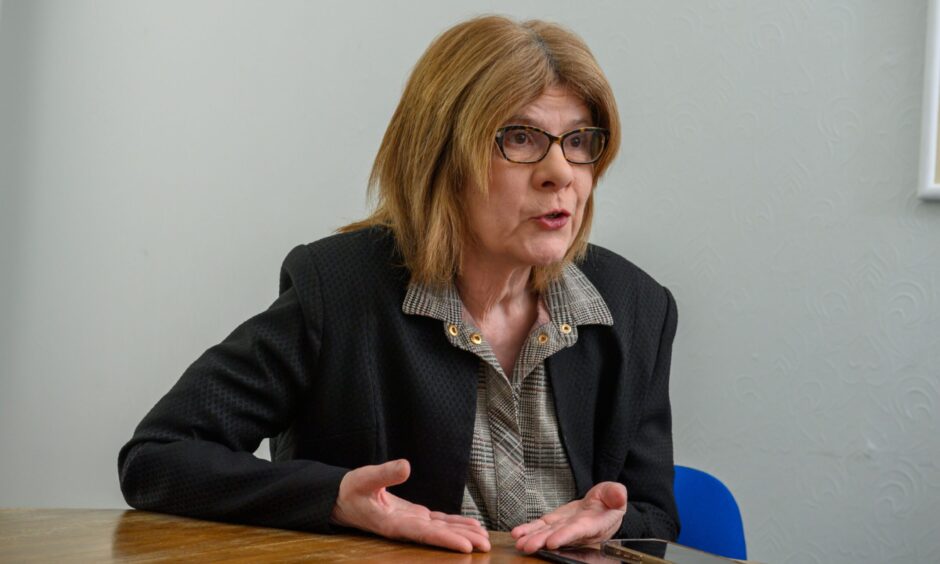
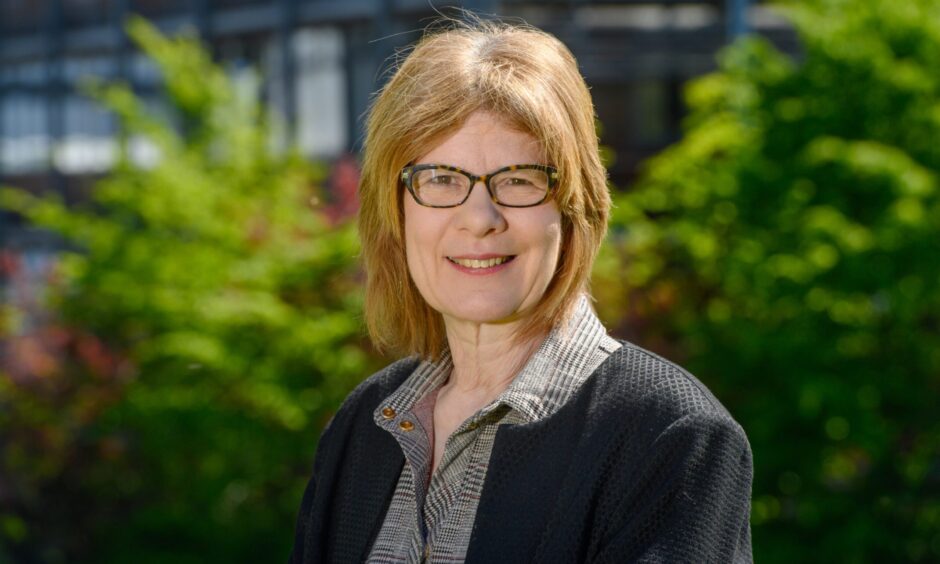
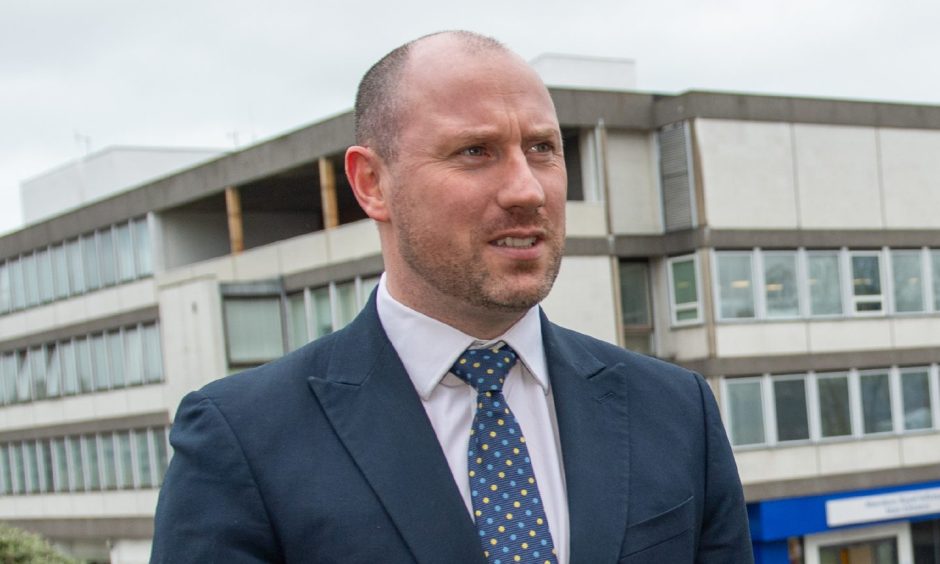
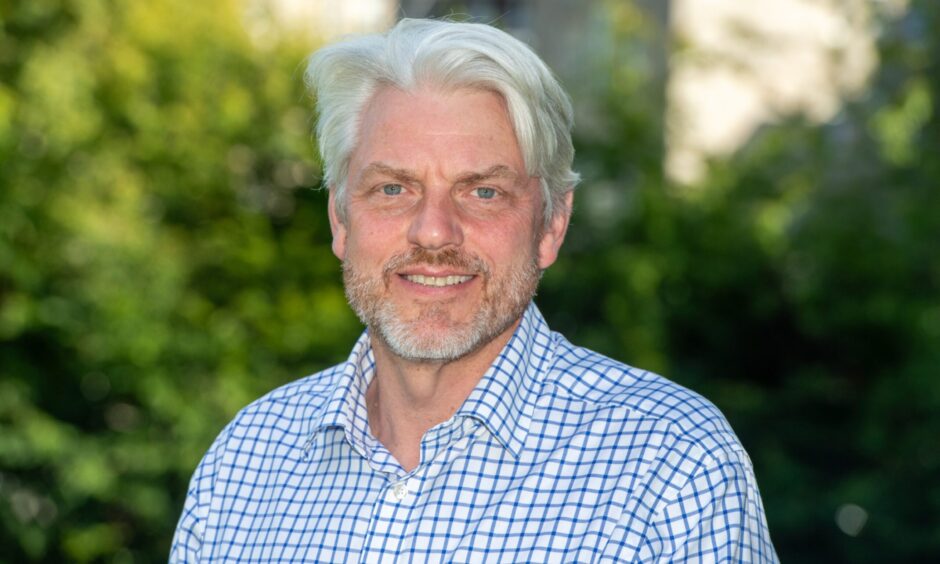
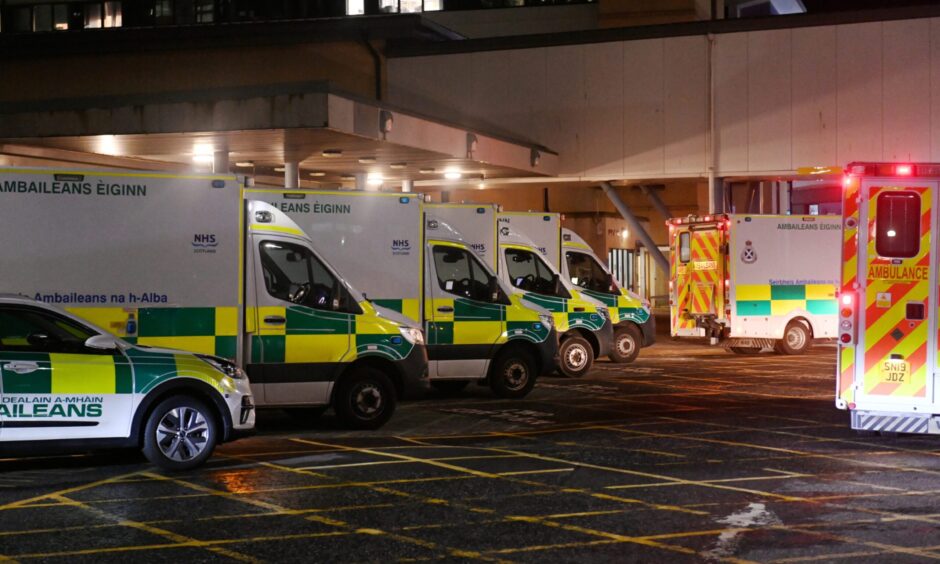
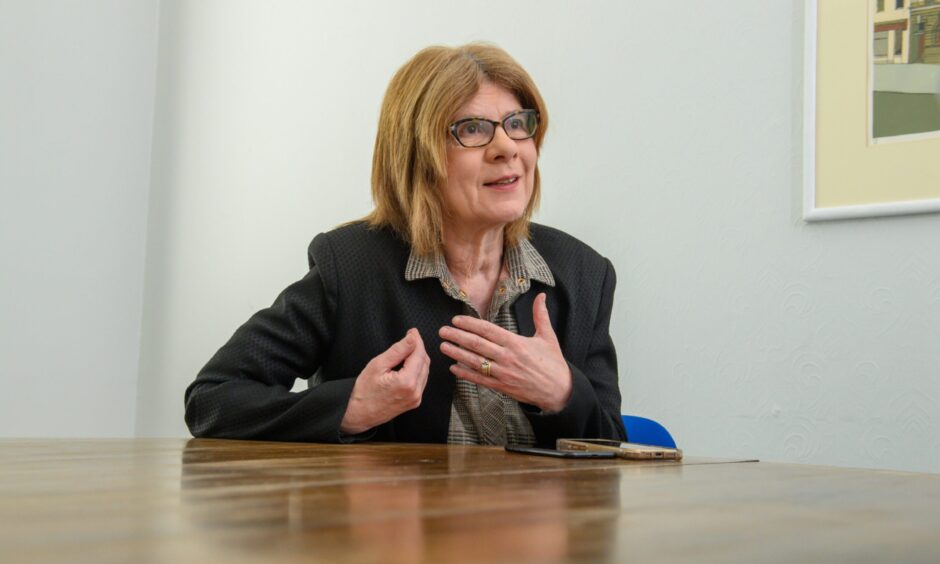
Conversation